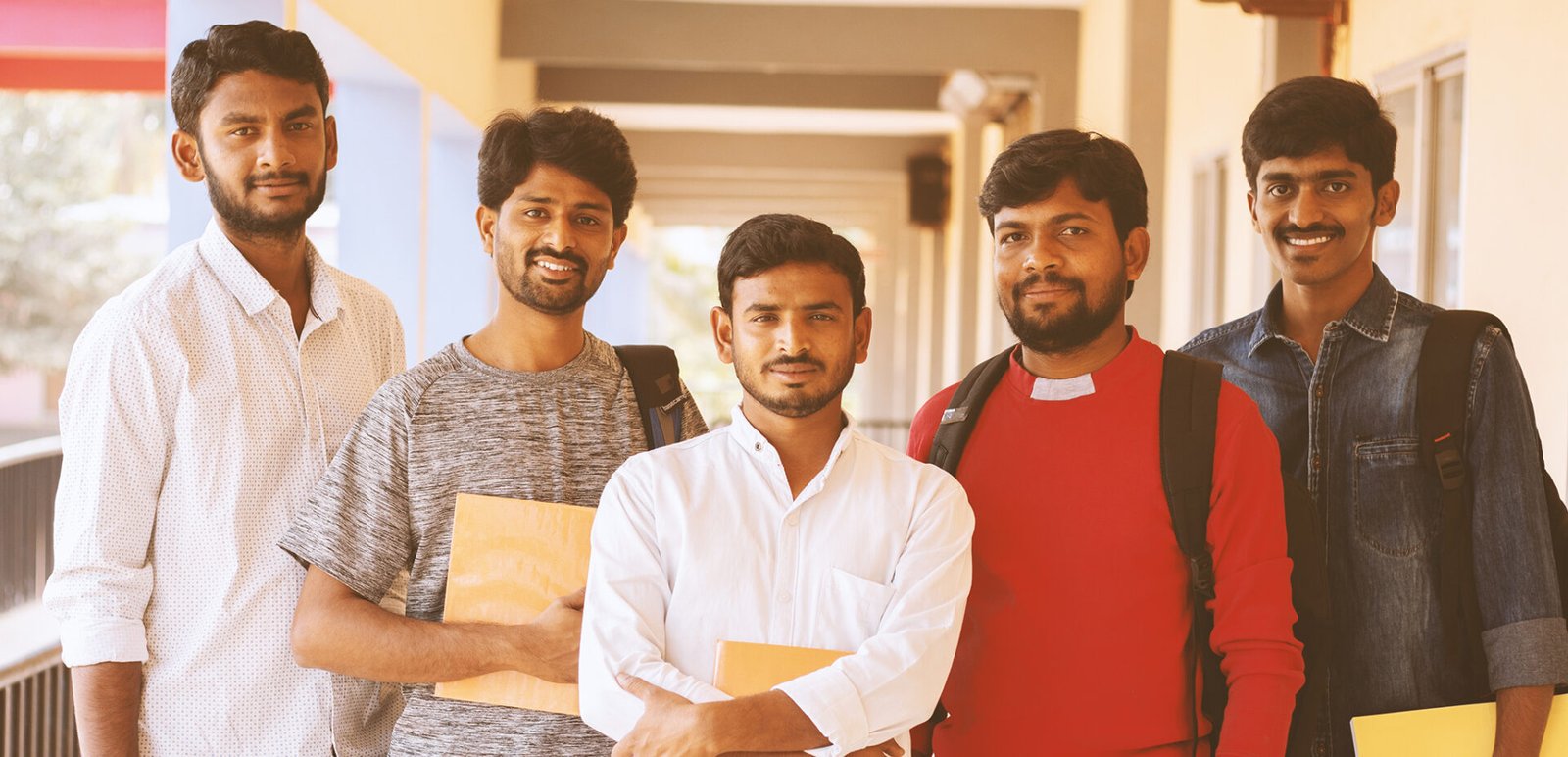How Indian Students Can Migrate Abroad Through Education in 2026
How Indian Students Can Migrate Abroad Through Education in 2026
For thousands of Indian students, studying abroad represents more than just academic advancement—it's a strategic pathway to international migration and global career opportunities. As we approach 2026, the landscape for Indian students migration 2026 through education continues to evolve, with new policies, emerging destinations, and enhanced pathways from student visas to permanent residency.
This comprehensive guide explores how Indian students can effectively use education as a stepping stone to migrate abroad permanently. We'll examine the most favorable countries for the study abroad PR pathway, current immigration policies, strategic planning approaches, and how to maximize your chances of successfully transitioning from international student to permanent resident.
Whether you're considering undergraduate studies, postgraduate programs, or specialized diplomas, understanding how to leverage your educational investment into long-term settlement is crucial. The overseas education benefits extend far beyond the classroom, offering exposure to global perspectives, international networks, and career opportunities that can transform your future.
Get Free CounsellingTable of Contents
- Why Education is the Smartest Path to Migration
- Top Countries for Study-to-Settlement Pathways in 2026
- Understanding Post-Study Work Rights and PR Pathways
- Choosing the Right Course for Migration Success
- Financial Planning for Education Migration
- Visa Strategies: From Student Visa to Permanent Residency
- Maximizing Your Stay: Networking and Career Building
- Emerging Trends in Education Migration for 2026
- Common Mistakes to Avoid in Your Migration Journey
- Success Stories: Indians Who Migrated Through Education
- Frequently Asked Questions
Why Education is the Smartest Path to Migrate Abroad Through Education
Choosing to migrate abroad through education offers numerous advantages over direct employment or family sponsorship routes. For Indian students, this approach provides a structured, gradual transition to life in a new country while building valuable credentials and local experience.
Education-based migration allows you to:
- Gain recognized qualifications that enhance employability in your host country
- Access post-study work rights that provide a bridge to permanent residency
- Build professional networks and local references before entering the job market
- Adapt to cultural and professional norms in a supported environment
- Demonstrate language proficiency and integration potential to immigration authorities
According to data from the OECD Education, international students who complete degrees in their host countries have significantly higher success rates in obtaining permanent residency compared to those applying from abroad. This makes the study to settle abroad approach particularly effective for Indian students aiming for long-term settlement.
Key Insight: Countries like Canada, Australia, and Germany actively incentivize international students to stay after graduation through favorable immigration policies, recognizing that these students have already demonstrated integration potential and possess locally relevant qualifications.
The strategic advantage of studying abroad before migrating cannot be overstated. You're not just earning a degree—you're building a foundation for permanent settlement, with access to campus resources, career services, and immigration advising that can streamline your transition from student to resident.
Get Free CounsellingTop Countries for Study-to-Settlement Pathways in 2026
When planning your strategy to migrate abroad through education, selecting the right destination is crucial. Different countries offer varying pathways, processing times, and success rates for transitioning from student to permanent resident. Here are the top destinations for Indian students in 2026:
Canada: Consistently ranked as the top destination for education-based migration, Canada offers some of the most straightforward pathways from study to permanent residency. The Post-Graduation Work Permit (PGWP) allows graduates to work for up to three years, during which they can gain Canadian experience needed for Express Entry programs. According to Immigration, Refugees and Citizenship Canada, over 50% of international students transition to permanent residence within 10 years of receiving their first study permit.
Australia: Australia's Temporary Graduate Visa (subclass 485) provides 2-4 years of post-study work rights, depending on qualification level. Graduates can then transition to permanent residency through skilled migration programs like the Skilled Independent visa (subclass 189) or Skilled Nominated visa (subclass 190). The Department of Home Affairs regularly updates occupation lists that prioritize certain fields for migration.
Germany: After completing studies, international graduates can extend their residence permit for up to 18 months to seek employment related to their qualification. Once employed, they can apply for an EU Blue Card or settlement permit. Germany's strong economy and welcoming stance toward skilled migrants make it an attractive option for Indian students migration 2026 plans.
New Zealand: The Post-study Work Visa allows graduates to work for 1-3 years, depending on their qualification level and where they studied. New Zealand's Skilled Migrant Category points system favors those with local qualifications and work experience.
United Kingdom: The Graduate Route allows international students to stay for 2 years after completing their studies (3 years for PhD graduates) to work or look for work. While transitioning to settlement requires meeting specific criteria, the UK remains popular for its world-class education and diverse job markets.
When selecting a destination, consider factors beyond just immigration policies—evaluate job market conditions in your field, cost of living, cultural compatibility, and long-term quality of life. The right choice depends on your personal circumstances, career goals, and migration objectives.
Get Free CounsellingUnderstanding Post-Study Work Rights and PR Pathways
Post-study work rights are the critical bridge that enables international students to migrate abroad through education. These temporary work permits allow you to gain local professional experience, build your resume, and qualify for permanent residency programs that value domestic work experience.
The duration and conditions of post-study work rights vary by country:
- Canada: PGWP validity matches the length of your study program, up to a maximum of 3 years
- Australia: 2 years for Bachelor's degrees, 3 years for Master's by coursework, 4 years for PhDs
- UK: 2 years for most degrees, 3 years for PhD graduates
- Germany: 18 months to find employment related to your field of study
- New Zealand: 1 year for most qualifications, up to 3 years for higher-level degrees
Understanding how to leverage these work rights into permanent residency requires strategic planning. Most economic migration programs award additional points for:
- Local educational credentials
- Local work experience
- Job offers from domestic employers
- Language proficiency demonstrated through local immersion
For example, Canada's Express Entry system awards significant points for Canadian education (up to 30 points) and Canadian work experience (up to 80 points). Similarly, Australia's points-tested visas prioritize applicants with Australian study qualifications and work experience.
The key to a successful study abroad PR pathway is to begin planning your immigration strategy before you even start your studies. Select courses that align with in-demand occupations, build professional networks during your studies, and secure relevant work experience during your post-study work period.
Pro Tip: Many students make the mistake of focusing solely on their studies without building the professional connections needed for employment after graduation. Start networking, attending industry events, and seeking internships from your first semester to maximize your chances of securing employment during your post-study work period.
Choosing the Right Course for Migration Success
Your choice of study program significantly impacts your ability to successfully migrate abroad through education. While personal interest and academic strengths should guide your decision, strategic consideration of migration outcomes is equally important when planning your study to settle abroad journey.
When selecting a course, consider these factors:
Alignment with Occupation Shortage Lists: Most countries publish official lists of occupations in high demand. Choosing programs that lead to these occupations significantly improves your migration prospects. For instance, healthcare, technology, engineering, and trades consistently appear on shortage lists across multiple countries.
Program Duration and Level: Longer programs often provide longer post-study work rights. In Australia, Bachelor's degrees (typically 3-4 years) provide 2 years of work rights, while Master's degrees (1-2 years) provide 3 years, and PhDs (3-4 years) provide 4 years. Similarly, in Canada, programs shorter than 8 months don't qualify for PGWP, while 2-year programs can provide 3-year work permits.
Institution Reputation and Location: Graduates from prestigious institutions may find employment more easily. Additionally, some provinces/states in countries like Canada and Australia have specific nomination programs that favor graduates from local institutions or those who study in specific regions.
Professional Accreditation: For regulated professions like engineering, nursing, or accounting, ensure your program meets the accreditation requirements of professional bodies in your target country. Resources like the World Education Services can provide guidance on credential recognition.
Work-Integrated Learning Opportunities: Programs with co-op placements, internships, or practicum components provide valuable local work experience and professional connections that can lead to post-graduation employment.
Researching course options requires careful consideration of both immediate educational goals and long-term migration objectives. The ideal program balances your interests and strengths with strategic migration advantages.
Get Free CounsellingFinancial Planning for Education Migration
Successfully executing a plan to migrate abroad through education requires careful financial planning. The costs extend beyond tuition fees to include living expenses, immigration applications, and establishing yourself professionally in a new country.
Key financial considerations include:
Tuition Fees: These vary significantly by country, institution, and program. On average, international student tuition ranges from $15,000 to $50,000 annually. Research specific programs and explore scholarship opportunities through resources like the Scholarships for Development database.
Living Expenses: Most countries require proof of sufficient funds to cover living expenses as part of the student visa application. These requirements typically range from $10,000 to $20,000 annually, depending on the destination.
Post-Study Transition Costs: Budget for expenses during the transition from student to worker, including work permit applications, professional wardrobe, relocation costs, and potential periods of unemployment while job hunting.
Permanent Residency Application Fees: These can range from $1,000 to $5,000 depending on the country and program, not including potential legal or consultation fees.
Funding strategies for Indian students include:
- Education loans from Indian banks (typically cover up to 90% of costs)
- International student scholarships offered by institutions
- Part-time work during studies (typically 20 hours per week allowed)
- Research or teaching assistantships for postgraduate students
- Family support and personal savings
Creating a comprehensive budget that accounts for all stages of your education migration journey—from pre-departure to permanent residency—is essential for financial stability and reducing stress throughout the process.
Get Free CounsellingVisa Strategies: From Student Visa to Permanent Residency
Navigating the complex visa pathway from international student to permanent resident requires strategic planning and timely action. Understanding the sequence of visas and application timelines is crucial for a successful transition to migrate abroad through education.
The typical visa progression includes:
- Student Visa: Your entry point for education-based migration. Ensure you maintain valid status throughout your studies.
- Post-Study Work Visa: Apply as soon as you complete your program requirements, before your student visa expires.
- Permanent Residency: Submit your application during your post-study work period, ideally once you've secured relevant employment.
- Citizenship: Available after meeting residency requirements as a permanent resident (typically 3-5 years).
Key strategic considerations for visa success:
Maintaining Legal Status: Any gaps in legal status can jeopardize your migration prospects. Apply for subsequent visas well before your current visa expires and maintain compliance with all visa conditions.
Document Preparation: Keep meticulous records of your academic transcripts, employment records, tax documents, and residence history. These will be essential for permanent residency applications.
Timing Applications: Research processing times for each visa stage and submit applications with sufficient lead time. Resources like the Visa Tutor platform can provide guidance on application timelines.
Professional Advice: Consider consulting with registered migration agents or immigration lawyers for complex cases or if you encounter challenges. While this involves additional cost, it can prevent costly mistakes.
Each country has specific requirements and potential pitfalls in the visa progression. For example, in Australia, you must apply for your Temporary Graduate Visa within 6 months of completing your studies, while in Canada, you have 180 days after receiving your final marks to apply for a PGWP.
Understanding these nuances and planning your visa strategy from the outset will streamline your journey from student to permanent resident.
Get Free CounsellingMaximizing Your Stay: Networking and Career Building
Successfully transitioning from international student to permanent resident requires more than just academic achievement—it demands proactive career development and strategic networking. The overseas education benefits extend far beyond the classroom when you actively build your professional presence in your host country.
Effective strategies for career building include:
Leverage University Resources: Most universities offer comprehensive career services, including resume reviews, interview preparation, and career fairs. These services are typically free for students and recent graduates. Attend employer information sessions and campus recruitment events to connect directly with potential employers.
Develop Local Professional Networks: Join professional associations related to your field. Attend industry conferences, seminars, and networking events. Platforms like LinkedIn are invaluable for connecting with professionals in your industry and location.
Gain Local Work Experience: Even entry-level positions or internships in your field provide valuable local references and demonstrate your adaptability to local work culture. Many students underestimate the value of seemingly minor roles that nonetheless build your local professional profile.
Cultural Integration: Developing cultural competence and understanding local business etiquette enhances your professional interactions. Participate in community events, volunteer opportunities, and social activities to build connections beyond academic circles.
Mentorship: Seek out mentors in your industry—either through formal university programs or informal connections. Mentors can provide invaluable guidance on navigating the local job market and may offer referrals or introductions.
Remember that building a professional network takes time. Start these activities early in your studies rather than waiting until graduation. The relationships you build during your student years can lead to job opportunities, references for permanent residency applications, and long-term professional connections.
Success Strategy: International students who secure employment related to their field of study within the first 3 months of their post-study work period have significantly higher rates of successful permanent residency applications. Begin your job search at least 6 months before graduation to maximize your chances of timely employment.
Emerging Trends in Education Migration for 2026
The landscape for Indian students migration 2026 is evolving rapidly, with several emerging trends that will shape education-based migration pathways. Understanding these developments can help you make informed decisions about your migration strategy.
Key trends to watch include:
Digital Nomad and Remote Study Options: The pandemic accelerated the acceptance of online education, and many institutions now offer hybrid or fully online programs that may provide pathways to residency. Some countries are introducing digital nomad visas that could complement or replace traditional study pathways.
Regional Migration Programs: Countries like Australia and Canada are increasingly promoting migration to regional areas through additional points, dedicated visas, or longer work rights for students who study outside major cities. The Regional Development Australia program is one example of this trend.
Focus on Specific Skill Sets: Immigration policies are becoming more targeted toward specific occupations facing critical shortages. Healthcare, technology, and green energy sectors are receiving particular attention in many destination countries.
Increased Competition: As more students recognize the value of education-based migration, competition for places at institutions with strong migration outcomes is intensifying. Early application and strong academic profiles are becoming increasingly important.
Policy Volatility: Immigration policies can change rapidly in response to economic conditions, political shifts, or public opinion. Staying informed through official sources like government immigration websites is essential for adapting your strategy as needed.
Pathway Programs: Many institutions now offer structured pathway programs that combine language training, academic preparation, and guaranteed progression to degree programs. These can be excellent options for students who need additional preparation before beginning their main studies.
As these trends evolve, the team at Vibedu study abroad remains committed to providing current, accurate information to help Indian students navigate the changing landscape of education-based migration.
Get Free CounsellingCommon Mistakes to Avoid in Your Migration Journey
Avoiding common pitfalls can significantly improve your chances of successfully using education to migrate abroad through education. Learning from the experiences of previous students can help you navigate your own journey more effectively.
Common mistakes include:
Poor Course Selection: Choosing programs based solely on personal interest without considering migration outcomes, employment prospects, or accreditation requirements. Research how your chosen qualification translates to the local job market and immigration points systems.
Insufficient Financial Planning: Underestimating the total cost of education and migration, leading to financial stress or inability to complete the process. Create a comprehensive budget that includes tuition, living expenses, visa applications, and contingency funds.
Neglecting Professional Development: Focusing exclusively on academics without building professional networks, gaining local work experience, or developing industry connections. Remember that migration success often depends as much on professional integration as academic achievement.
Poor Timing of Applications: Waiting until the last minute to apply for subsequent visas, risking gaps in legal status. Research processing times and submit applications well in advance of expiry dates.
Inadequate Language Preparation: Underestimating the language proficiency required for both academic success and professional employment. Even in English-speaking countries, discipline-specific terminology and professional communication standards may require additional preparation.
Isolation from Local Communities: Remaining within international student bubbles instead of engaging with the broader community. Cultural integration is often assessed in permanent residency applications and is crucial for long-term satisfaction abroad.
By being aware of these common mistakes and proactively addressing them in your planning, you can significantly enhance your chances of a successful education-based migration experience.
Get Free CounsellingSuccess Stories: Indians Who Migrated Through Education
Hearing from those who have successfully navigated the path to migrate abroad through education can provide both inspiration and practical insights for your own journey. These success stories demonstrate the diverse pathways and strategies that have led Indian students to permanent settlement abroad.
Priya's Journey to Canada: Priya completed a two-year Business Administration diploma at a college in Toronto. During her studies, she worked part-time in retail and volunteered with local business organizations. After graduation, she secured a marketing coordinator position with a Canadian company. After one year of Canadian work experience, she qualified for Express Entry and received her permanent residency. Priya emphasizes the importance of networking: "The connections I made through volunteering directly led to my first professional job in Canada."
Rahul's Australian Success: Rahul pursued a Master of Information Technology in Melbourne. He actively participated in university hackathons and tech meetups, which led to an internship with a local startup. The internship converted to a full-time position after graduation. Rahul applied for permanent residency through the Skilled Nominated visa, receiving state nomination based on his IT qualifications and employment. "Choosing a course on the skilled occupation list was the best decision I made," Rahul notes.
Anjali's German Experience: Anjali completed a Master's in Mechanical Engineering at a German technical university. She took intensive German language courses alongside her studies, achieving B2 level proficiency by graduation. This language ability, combined with her engineering qualification, made her an attractive candidate for German employers. She secured a position with an automotive company and transitioned to an EU Blue Card, eventually obtaining permanent settlement. "Learning German was challenging but absolutely essential for my career in Germany," Anjali advises.
These stories highlight common success factors: strategic course selection, proactive networking, gaining local experience, and in some cases, developing language skills. While each journey is unique, these elements consistently appear in successful education-based migrations.
Get Free CounsellingFrequently Asked Questions
What is the success rate for Indian students migrating abroad through education?
Success rates vary by destination country and individual circumstances. In Canada, approximately 60% of international students transition to permanent residency within 10 years of their first study permit. In Australia, the conversion rate is around 50% for higher education graduates. Success depends on factors like course selection, language proficiency, work experience, and timely navigation of visa processes.
Which country offers the fastest pathway from study to permanent residency?
Canada currently offers one of the fastest pathways, with many students transitioning to permanent residency within 1-2 years after graduation through Express Entry or Provincial Nominee Programs. However, "fastest" depends on individual profiles—students with in-demand skills, strong language scores, and Canadian work experience often receive invitations more quickly.
Can I bring my family when I migrate through education?
Most countries allow international students to bring immediate family members (spouse and dependent children). Spouses typically receive work rights, and children can attend school. After transitioning to permanent residency, you can sponsor additional family members through family sponsorship programs, though eligibility and processing times vary by country.
How important are language test scores for education-based migration?
Language proficiency is critical for both admission to educational institutions and successful migration. Most economic migration programs award significant points for language ability. For English-speaking countries, IELTS or PTE scores typically need to be in the competent or superior range to maximize migration points. For non-English speaking destinations, proficiency in the local language greatly enhances employment and integration prospects.
What happens if I can't find a job during my post-study work period?
If you're unable to secure employment during your post-study work period, options may include extending your stay through other visa categories (if eligible), changing status to visitor while continuing your job search, or returning to your home country and applying for permanent residency from abroad (though this is typically more challenging). Planning your job search strategically before graduation maximizes your chances of securing employment.
How can Vibedu assist with my education-based migration plan?
Vibedu provides comprehensive support for education-based migration, including course and institution selection aligned with migration outcomes, visa application assistance, pre-departure orientation, and post-arrival support services. Our experienced counselors stay current with changing immigration policies across major destination countries and provide personalized guidance based on your academic background, career goals, and migration objectives.
Conclusion
Education remains one of the most effective pathways for Indian students to achieve their dreams of international migration. As we look toward 2026, the opportunities to migrate abroad through education continue to expand, with countries increasingly valuing the contributions of international graduates to their economies and societies.
The journey from student to permanent resident requires careful planning, strategic decision-making, and proactive engagement with your host country's professional and social landscapes. By selecting the right destination and course, building local networks, gaining relevant work experience, and navigating visa processes diligently, you can successfully transition from international student to permanent resident.
Remember that education-based migration is a marathon, not a sprint. It requires patience, resilience, and adaptability. The overseas education benefits extend beyond the qualification itself to include personal growth, global perspectives, and professional opportunities that can transform your life and career.
If you're ready to begin your journey to study to settle abroad, the team at Vibedu is here to provide expert guidance and support at every stage. With careful planning and the right support system, your dream of building a life abroad through education can become a reality.
Get Free Counselling








